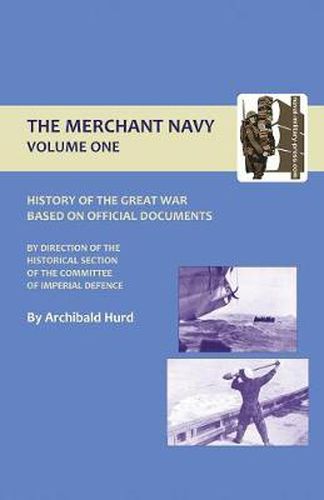Readings Newsletter
Become a Readings Member to make your shopping experience even easier.
Sign in or sign up for free!
You’re not far away from qualifying for FREE standard shipping within Australia
You’ve qualified for FREE standard shipping within Australia
The cart is loading…






This title is printed to order. This book may have been self-published. If so, we cannot guarantee the quality of the content. In the main most books will have gone through the editing process however some may not. We therefore suggest that you be aware of this before ordering this book. If in doubt check either the author or publisher’s details as we are unable to accept any returns unless they are faulty. Please contact us if you have any questions.
This final volume of the history of the Merchant Navy takes us from the onset of unrestricted submarine warfare to the conclusion of hostilities, and its prime concern is to give an account of the ordeal to which the seamen were subjected in the last twenty months of the war. But it also gives a good account of how the Merchant Navy took the war to the enemy through the 10th Cruiser Squadron and the Auxiliary Patrol, and in surface engagements involving British armed merchant cruisers. The losses to British merchant shipping make grim reading. For the five months from February 1917 (the start of intensive U boat operations) to the end of June 1,837,842 tons (590 ships) were lost at a cost of 2,942 lives; April was the worst month of the war with 516,394 tons (155 ships) sunk by submarines and 997 lives lost. During this period the convoy system was introduced and developed and problems and successes are discussed as well as other steps taken to combat the menace of the U boat and mine: the hydrophone; the depth charge; dazzle painting and its effect; the paravane; the smoke screen and the tactics of stalking and hunting. The German attitude to Hospital ships in light of the Berlin Declaration of 28 January 1917 is discussed. This declaration is reproduced in full and the British response to accusations of misuse of ships sailing under the Red Cross. Several sinkings of hospital ships are described, that of the Llandovery Castle on 27 June 1918 (only 24 survivors out of 258) in great detail. There is a chapter on merchant seamen prisoners, their treatment, the camps where and the conditions in which they were held. An appendix shows the number and gross tonnage of British merchant vessels and fishing vessels lost through enemy action during each month of the war, the final total of merchant ships is 2,479, gross tonnage 7,759,090, with a loss of 14,287 men. Six hundred and seventy-five fishing vessels were lost (71,765 gross tonnage) at a cost of 434 lives.
$9.00 standard shipping within Australia
FREE standard shipping within Australia for orders over $100.00
Express & International shipping calculated at checkout
This title is printed to order. This book may have been self-published. If so, we cannot guarantee the quality of the content. In the main most books will have gone through the editing process however some may not. We therefore suggest that you be aware of this before ordering this book. If in doubt check either the author or publisher’s details as we are unable to accept any returns unless they are faulty. Please contact us if you have any questions.
This final volume of the history of the Merchant Navy takes us from the onset of unrestricted submarine warfare to the conclusion of hostilities, and its prime concern is to give an account of the ordeal to which the seamen were subjected in the last twenty months of the war. But it also gives a good account of how the Merchant Navy took the war to the enemy through the 10th Cruiser Squadron and the Auxiliary Patrol, and in surface engagements involving British armed merchant cruisers. The losses to British merchant shipping make grim reading. For the five months from February 1917 (the start of intensive U boat operations) to the end of June 1,837,842 tons (590 ships) were lost at a cost of 2,942 lives; April was the worst month of the war with 516,394 tons (155 ships) sunk by submarines and 997 lives lost. During this period the convoy system was introduced and developed and problems and successes are discussed as well as other steps taken to combat the menace of the U boat and mine: the hydrophone; the depth charge; dazzle painting and its effect; the paravane; the smoke screen and the tactics of stalking and hunting. The German attitude to Hospital ships in light of the Berlin Declaration of 28 January 1917 is discussed. This declaration is reproduced in full and the British response to accusations of misuse of ships sailing under the Red Cross. Several sinkings of hospital ships are described, that of the Llandovery Castle on 27 June 1918 (only 24 survivors out of 258) in great detail. There is a chapter on merchant seamen prisoners, their treatment, the camps where and the conditions in which they were held. An appendix shows the number and gross tonnage of British merchant vessels and fishing vessels lost through enemy action during each month of the war, the final total of merchant ships is 2,479, gross tonnage 7,759,090, with a loss of 14,287 men. Six hundred and seventy-five fishing vessels were lost (71,765 gross tonnage) at a cost of 434 lives.